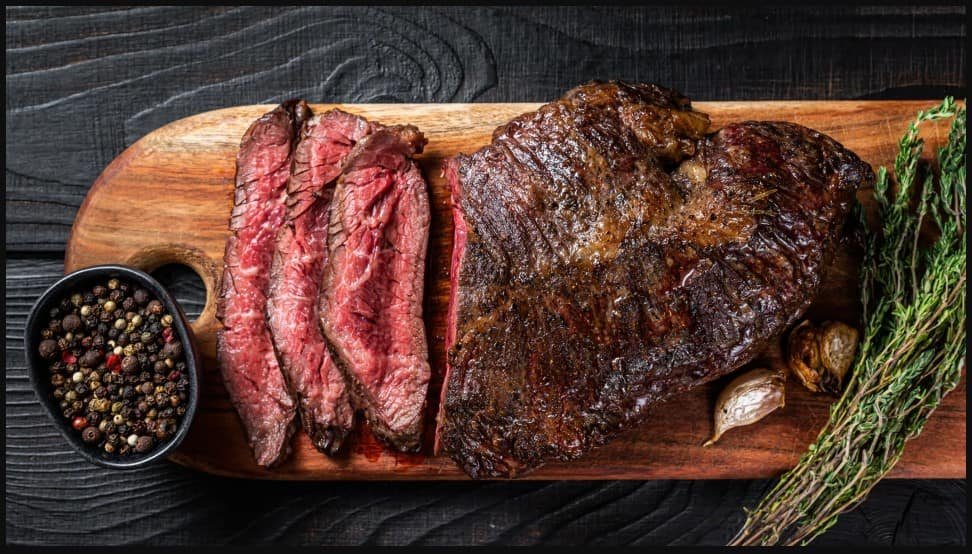Introduction to Hanger Steak
If you’re on the hunt for a cut of beef that brings bold flavor and tenderness to the table, look no further than hanger steak.
Often overlooked in favor of more popular cuts, this hidden gem quickly gains recognition among chefs and home cooks. But what makes hanger steak so special?
Let’s dive into the history, preparation methods, and delicious recipes surrounding this unique cut.
Whether you’re a seasoned cook or just starting your culinary journey, there’s plenty to discover about this flavorful piece of meat that deserves a spot in your kitchen rotation.
Get ready to learn all about hanger steak—it might become your new favorite!
The History and Origin of Hanger Steak
Hanger steak has a rich history that dates back centuries. This cut of beef, known for its distinct flavor and tenderness, was once considered a hidden gem among butchers.
Originating from the diaphragm area of cattle, hanger steak earned its nickname as “butcher’s steak.” Due to its exceptional taste, butchers often kept this cut to themselves. In the last few decades, hanger steak has gained popularity among home cooks and chefs.
Traditionally favored in French cuisine, hanger steak hanger steak is called “onglet.” Its robust flavor profile made it a staple in bistro menus across Paris. As food enthusiasts began exploring lesser-known cuts, hanger steak found new life outside France.
Today, it’s celebrated worldwide for its versatility and ability to absorb marinades beautifully. Whether grilled or pan-seared, this cut offers a culinary adventure steeped in tradition.
Flavor and Texture of Hanger Steak
Hanger steak is often celebrated for its bold flavor. Its rich, beefy taste stands out when cooked correctly. This cut holds onto juices well, enhancing its succulent nature.
Another highlight is the texture of the hanger steak. It’s tender yet slightly chewy, creating a satisfying bite. When grilled or pan-seared, the outer crust forms beautifully while keeping the inside juicy and flavorful.
Many describe it as having hints of sweetness and earthiness. These unique qualities make it versatile in various dishes.
When seasoned simply with salt and pepper or marinated with herbs, hanger steak truly shines. Its robust profile invites creativity in the kitchen while standing firm on its merits. Each bite tells the story of quality meat prepared with care.
How to Cook Hanger Steak
Cooking hanger steak is a delightful experience. Start by choosing a well-marbled piece for the best flavor.
Let the meat come to room temperature before cooking. This helps achieve an even cookout throughout.
Season generously with salt and pepper. Simple seasonings allow the natural flavors to shine through.
For pan-searing, use high heat in a cast-iron skillet or grill. Preheat your skillet until it’s smoking hot.
Cook for about 4-5 minutes per side for medium-rare. Use a meat thermometer to check; aim for around 130°F (54°C).
Once done, let it rest for at least five minutes before slicing it against the grain. This step ensures tenderness with every bite.
Pair with chimichurri sauce or sautéed vegetables for added flair and freshness!
Popular Recipes Using Hanger Steak
Hanger steak shines in various dishes thanks to its rich flavor and tender texture. One popular recipe is the classic hanger steak fajitas. After marinating it with lime juice and spices, slice the meat thinly and grill alongside bell peppers and onions for a vibrant meal.
Another favorite is hanger steak served with chimichurri sauce. The herbaceous tanginess complements the beef beautifully, making each bite unforgettable.
For those who enjoy Asian cuisine, consider stir-frying slices of hanger steak with vegetables like broccoli and snap peas. A splash of soy sauce brings everything together in a savory delight.
Please don’t overlook the simplicity of grilling it whole. Season generously and cook over high heat for that perfect charred crust while keeping the inside juicy.
Each method showcases this versatile cut’s incredible potential, enticing food lovers everywhere.
Tips for Buying and Preparing Hanger Steak
When buying hanger steak, look for a deep red and good marbling. The fat should be evenly distributed, which enhances flavor during cooking. Choose grass-fed beef for a richer taste.
Before cooking, let your hanger steak rest at room temperature for about 30 minutes. This helps it cook more evenly. Trim any excess silverskin or connective tissue to ensure tenderness.
Marinating is key! A simple mix of olive oil, garlic, and herbs works wonderfully. Aim to marinate for at least an hour but no longer than overnight; too much time can result in mushy meat.
Cook the steak over high heat to achieve that perfect sear while keeping the inside juicy. Use a meat thermometer for accuracy—130°F will give you medium-rare perfection.
Let it rest post-cooking to allow juices to redistribute before slicing against the grain for maximum tenderness.
Conclusion: Why You Should Try Hanger Steak
Hanger steak is a hidden gem that deserves the spotlight it often misses. With its rich flavor and tender texture, it offers an experience that rivals more popular cuts of beef. The history behind this cut adds to its charm, showcasing how culinary traditions evolve.
Cooking hanger steak is straightforward.
Whether you’re grilling, pan-searing, or broiling, you’ll be rewarded with delicious results. And countless recipes are just waiting for you to try—each one emphasizing its unique characteristics.
Knowing what to look for when purchasing hanger steak can further elevate your dish. Freshness makes all the difference in taste and quality.
If you haven’t yet explored the world of hanger steak, now’s the perfect time to do so. It promises satisfaction on your plate and a chance to impress family and friends with something they may not have experienced before.
Embrace this flavorful cut; it’s sure to become a favorite in your kitchen repertoire.

